Are you tired of visiting Mexico yet? Too bad if you are because we still have a long way to go. These are the last batch of photos from our visit to Chichen Itza.
This photo is from the wall of skulls now being restored. An interesting note: upper class babies had boards strapped to their heads at birth to flatten their skulls. Why they did this no one seems to know. Either they thought it aesthetically pleasing or perhaps they thought it “expanded” the mind? (Those are my own interpretations and not those of our guide.) Either way, yet another reason not to be part of Mayan upper class.
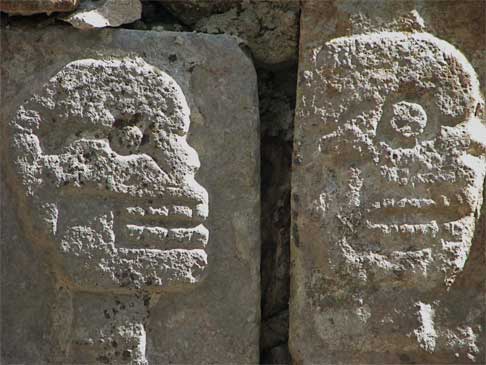
The Temple of Warriors is one of the largest structures here. Unfortunately, like most of the other structures at Chichen Itza, access is no longer permitted.
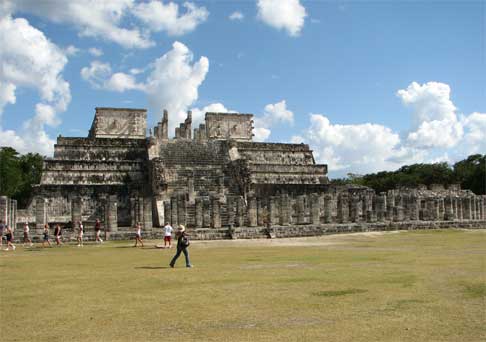
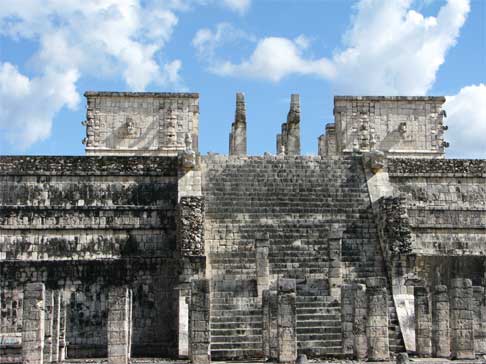
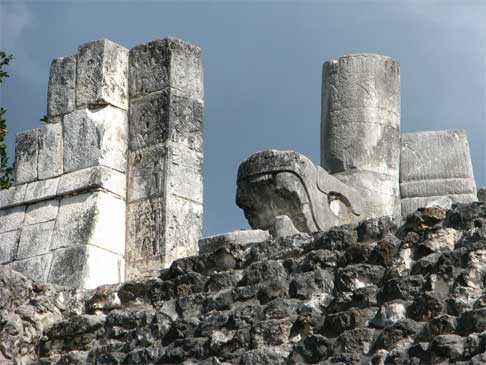
At the top of the staircase, a standard-bearer still holds his hands together to accept a flag.
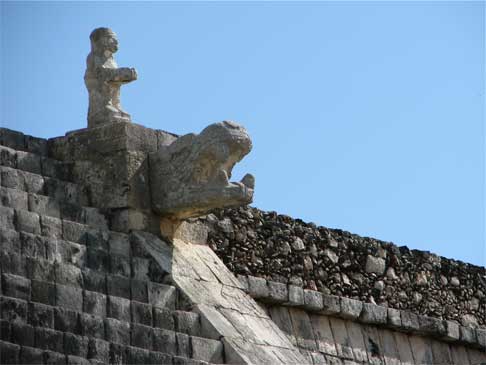
Its carved pillars still stand tall.
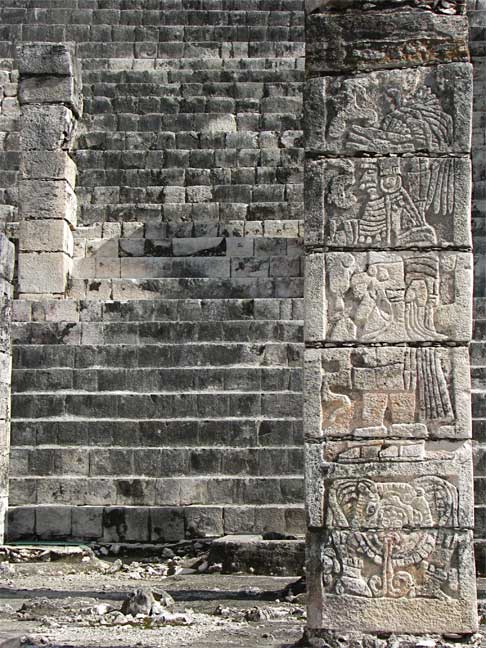
Hundreds of columns and pillars stretch out into the jungle. At one time they may have supported a roof of wooden beams and palm leaves.
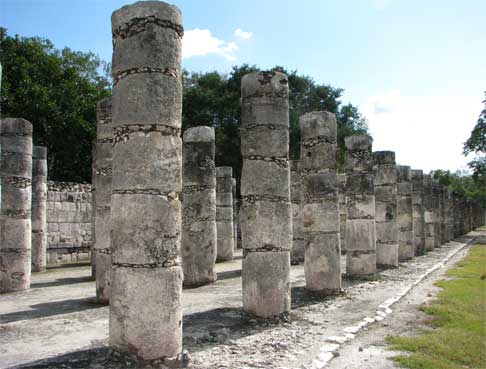
On other structures serpents still are very much present on staircases, their sinuous bodies carved in stone.
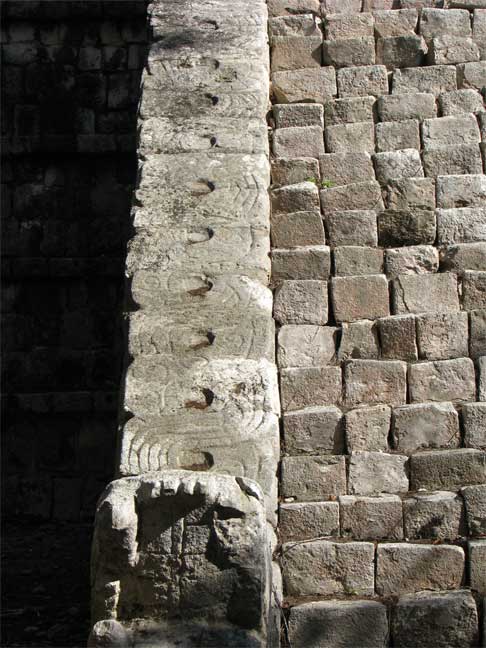
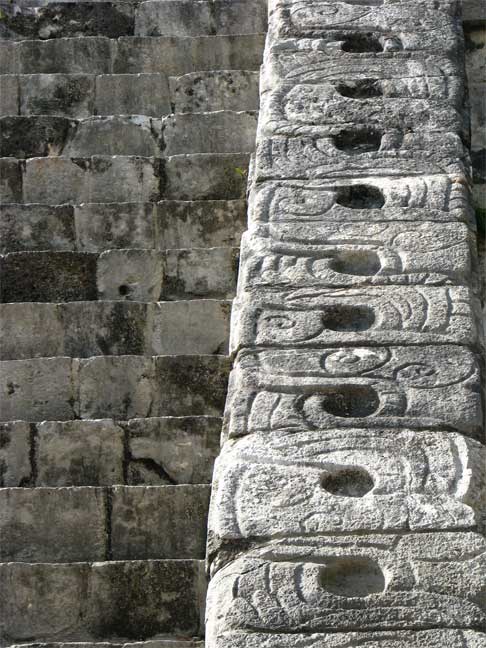
On our way to the last structure we will visit, we meet a local resident soaking up the heat of the day. It certainly will not be the last iguana we see in Mexico!
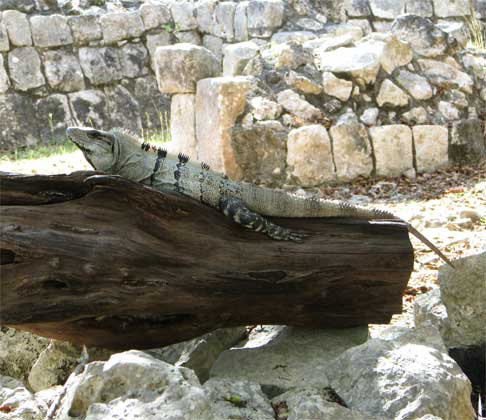
And, last but not least, we come to the Observatory where Mayans tracked heavenly bodies through narrow slits in its dome. It is the only structure here that you are allowed to climb up the stairs to, although you are not allowed inside. The stairs were steep and not suited for fast climbing. Since the Mayans were short people they must have had to take at least two strides on each step.
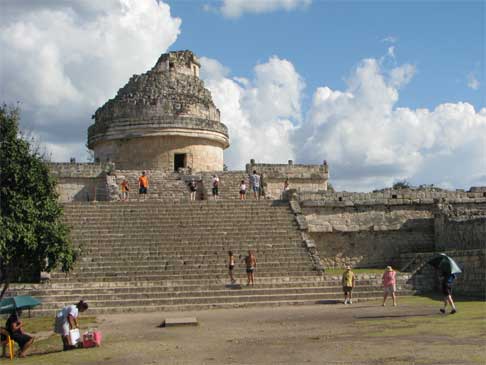
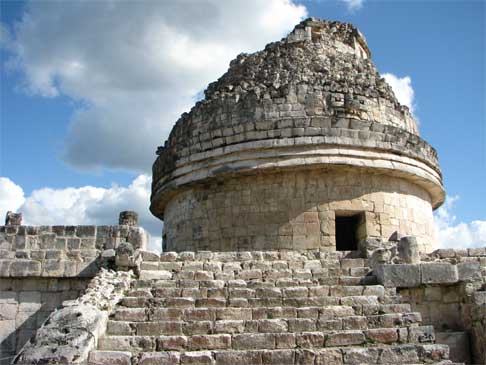
A close-up of the relief carving above the doorway.
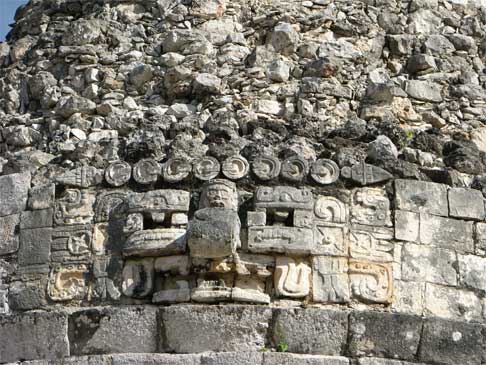
That concludes our tour of Chichen Itza and I hope you’ve enjoyed your visit! It truly is one of the Wonders of the World.
Stay tuned for the next entry and join me as I swim with the dolphins!
More...
The colors of Mexico, that is. Everywhere we went there was color. You couldn’t miss it. Blue. Red. Green. Yellow. Vibrant; alive.
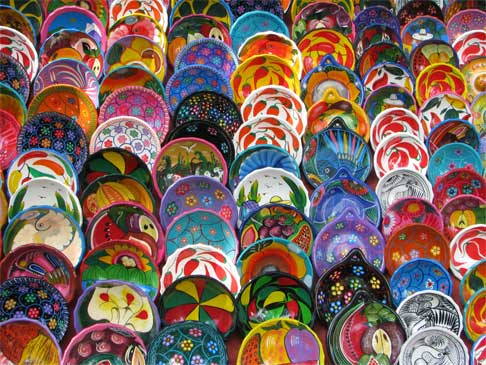
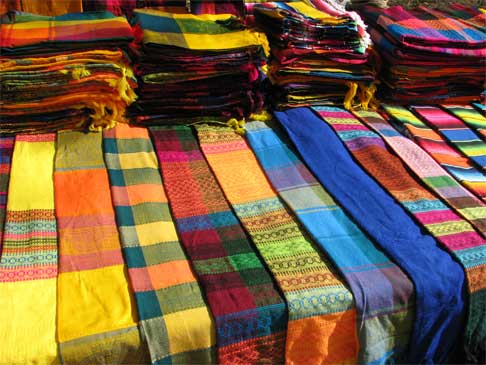
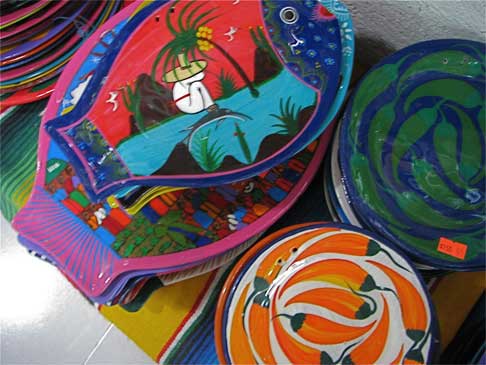
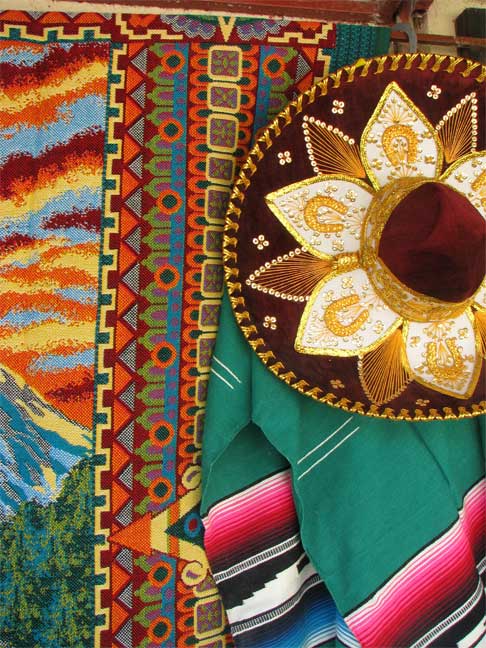
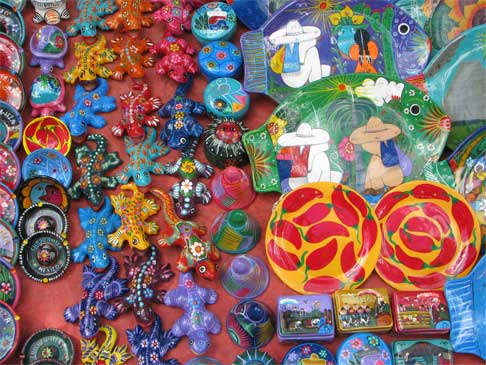
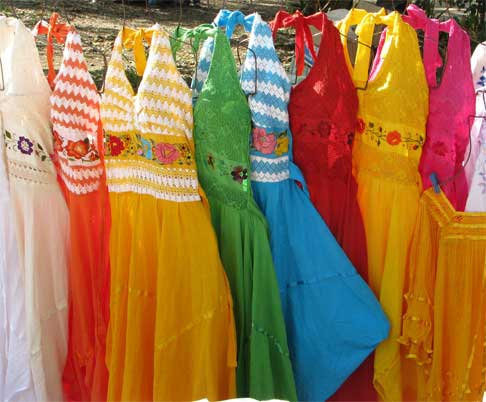
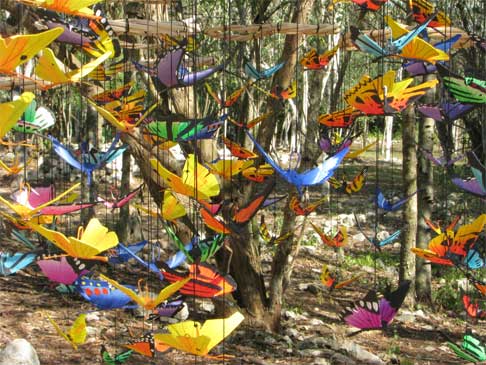
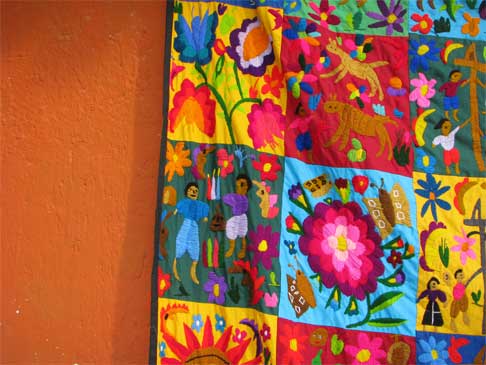
Today I’m taking a short break from bringing you armchair travels and instead we are going to come into my back yard. The weather over the past week has been very strange. We’ve had rain and fog.
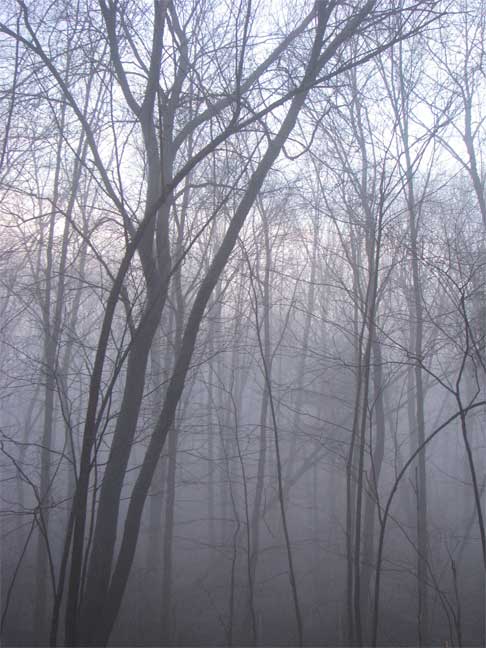
Friday morning we had thunder, lightning, and pouring rain. In the winter. Saturday morning we had a few brief snow showers that left about an inch of snow. About 11:00 Saturday night we were quite rudely awakened by an enormous clap of thunder, followed by three large dogs jumping up on our bed. Several more very close, blindingly-bright lightning strikes and ground shaking thunder claps followed the first, then torrents of rain pounded down on the roof. In the morning we were greeted with a solid sheet of ice on everything.
Sunday morning it snowed very heavily for about an hour.

An hour later all that was left on the trees were fairy drops, the sun shining through and illuminating them.
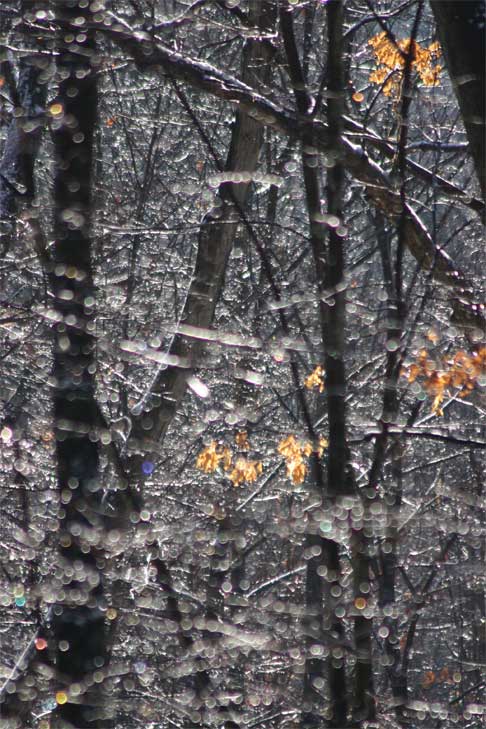
Another heavy little snow squall came through late afternoon and left tracings of snow on our front door mat, the pool cover, and the trees.
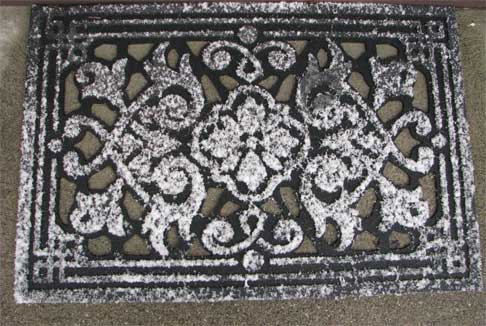
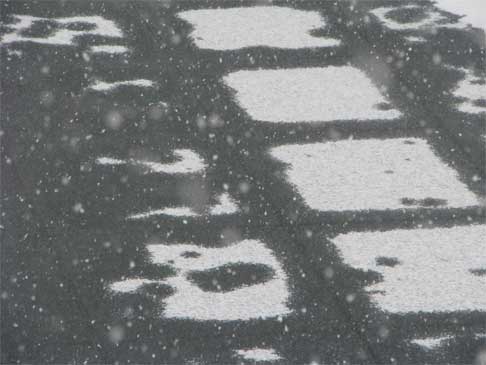

We are obviously seasonally-challenged here in New Jersey this year.
Sailor Update: Thanks to all who have expressed concern over Sailor’s lymphoma. He has had two chemo treatments and so far all is well. His lymph nodes were down by 50% after the first treatment and the vet was very pleased. This past week they have gone down even more. He has tolerated the chemo very well and each treatment was a different drug. He will continue weekly chemo treatments for another five weeks, then they will be every other week with one in four being just a pill at home. He is eating well and happy. If you didn’t know you’d swear there was nothing wrong with him.
I don’t know what the future holds for him, but all we can do is take one day at a time and make the most of it. Keep sending those good thoughts. I think they are working!
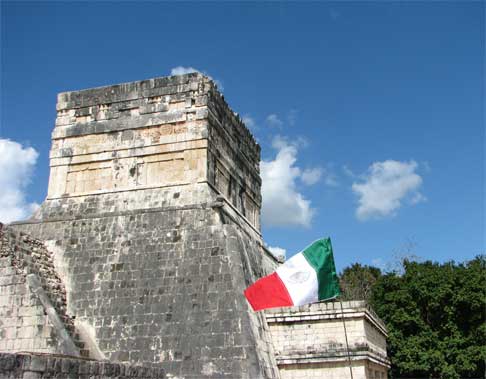
The ball game, or pok ta pok in Mayan, played an important role in Mayan society, for both religious and entertainment purposes. In nearly every Mayan city there is a Ball Court, but the great Ball Court in Chichen Itza is the largest at 551 feet (168 meters) long by 229 feet (70 meters) wide. It swallowed up the tourist crowds like we were nothing. Enormous.
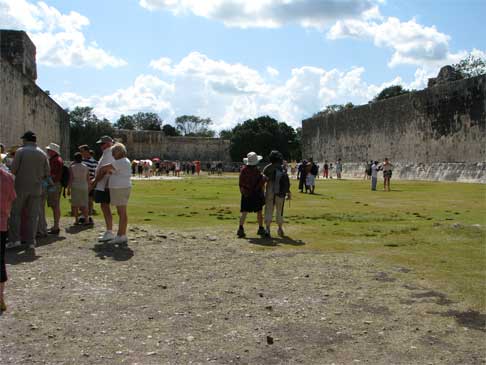
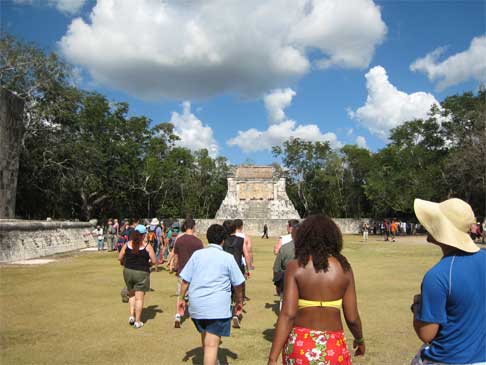
The court today consists of the Jaguar Temple that sits atop the east wall, a ruined platform on the west wall, the North Temple which is in fairly good repair, and the South Temple.
Here is the Jaguar Temple.
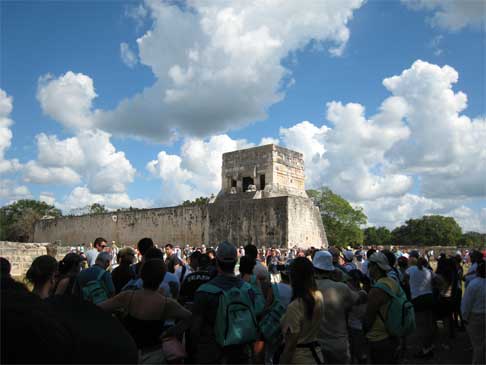
The North Temple. Here it is thought that the King would preside over games. The acoustics are also of note. It is said that if you are standing in the North Temple and another person is in the South Temple, you can converse in a normal tone of voice even though that person is 551 feet away from you.
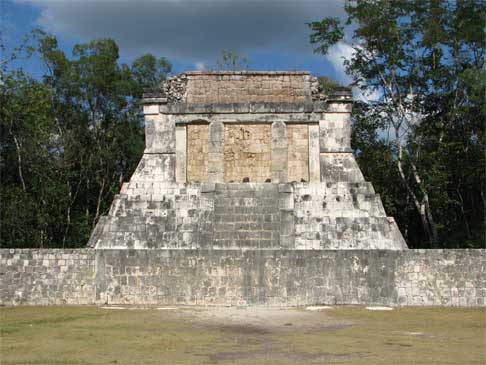
The game itself was played with two teams consisting of seven players, each with an appointed team captain. They tried to either hit (to score) a stone ring 23 feet above the playing field with a large rubber ball, or put the ball through the ring to win. Sound challenging? Under normal circumstances this would be challenging enough but how would you like to do that without using your hands? The ball was propelled by using either the knees or hips. (Note: some references say the use of wrists and shoulders were allowed as well.)
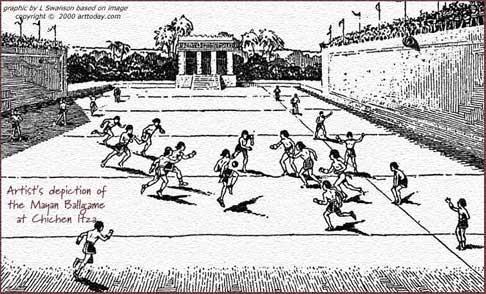
I’ve added arrows to this duplicate of the photo I used above earlier to show you where the stone rings are located. Look closely and you should see them. And, actually, you can also see a ring in the photo of the Jaguar Temple if you’re looking for it. See it you can find it.
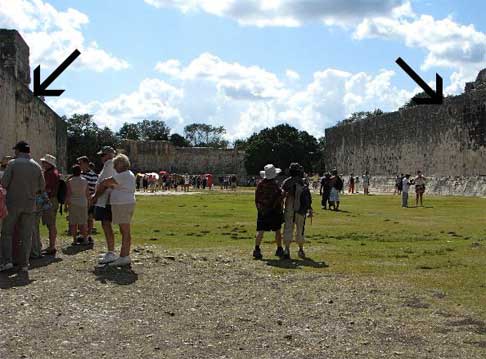
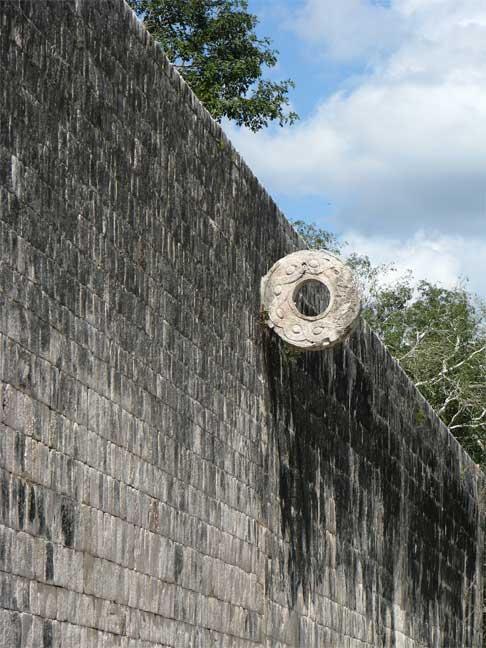
Of course, getting the ball to actually pass through the hoop didn’t happen very often, but when it did it ended the game. Now what happened to the “winner” (aka the team captain) is a source of debate. It was first thought that the losing team’s captain “lost” his head, but today’s belief is that the winning captain won the honor to become a sacrifice if he so chose. A great honor indeed since this meant he would get a straight ticket to the Gods instead of going through all the underworlds first. And oh, did I happen to mention that only the nobility were allowed to play the game? Hmm… maybe there’s something to being lower class after all ...
The benches that line the court on either side are carved with images of players wearing protection on their arms and legs and the rituals of the game. A snake runs the entire length of the bench. In one scene, a player kneels as his head is severed; blood spurts from his neck in the form of writhing serpents which then become garlands of flowers and leaves. Rebirth. Giving back to the Earth. If you look closely at the scene depicted in the third photo below you can see him on the far right side.
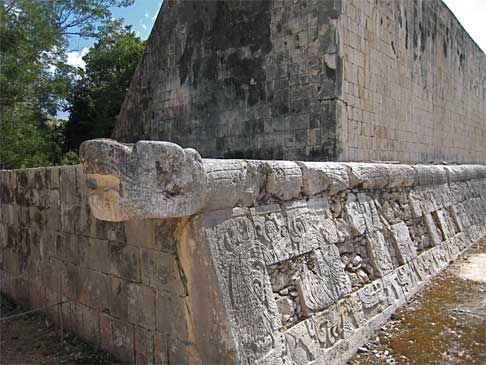
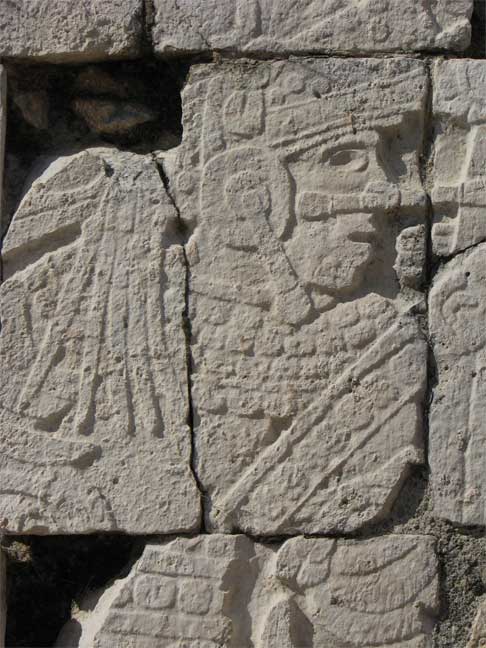
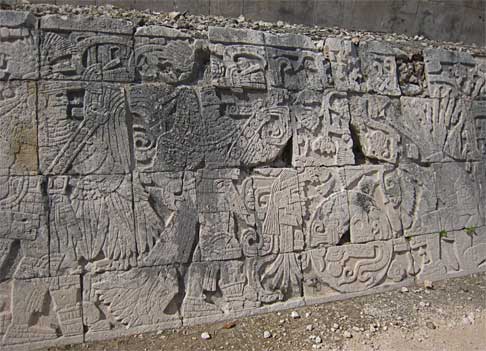
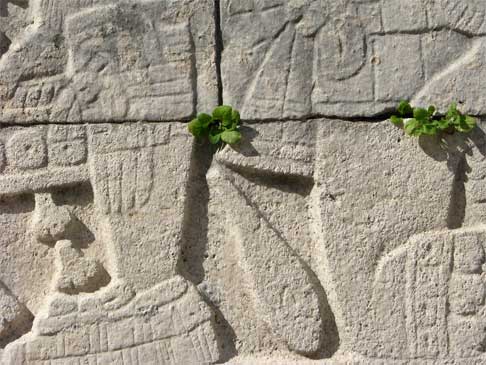
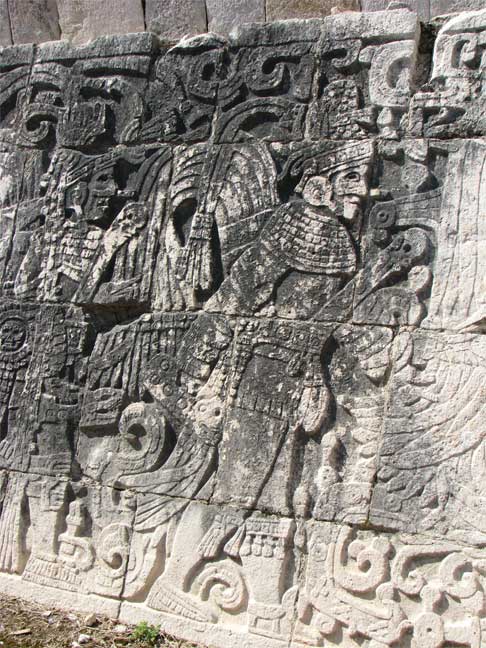
I couldn’t help wondering as I gazed upon all these carved reliefs about the time it took to create them. And the detail! Just amazing! By this time I was falling under the spell of these ancient people.
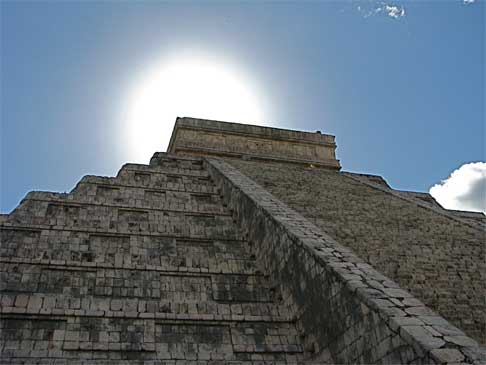
On our first full day in Cancun we signed up for a tour to one of the new Seven Wonders of the World, Chichen Itza, thereby ticking off one of the things on Rick’s ‘Bucket List.’ This well-preserved Mayan ruin is well worth the trip to the interior of the Yucatan Peninsula.
The Mayan civilizations were very advanced. They had their own writing and mathematical systems. They practiced astronomy, tracking the annual cycle of the sun and other heavenly bodies; even predicting when eclipses would occur years in advance. They created two different calendars: the solar calendar which consisted of 18 months of 20 days each plus five unlucky days (18 x 20 +5 = 365 days); and the other for calculating religious ceremonies and festivals and predicting the destinies of people. They built temples in such a way to correspond with the spring and fall equinoxes, where light from the setting or rising sun shone precisely through windows or doorways. Amazing.
There were so many interesting things to see and learn and I took so many photos that I’ve decided to break it down into separate blog entries. This entry will be about the most famous of the buildings here: The Castle, or Pyramid of Kukulcan.
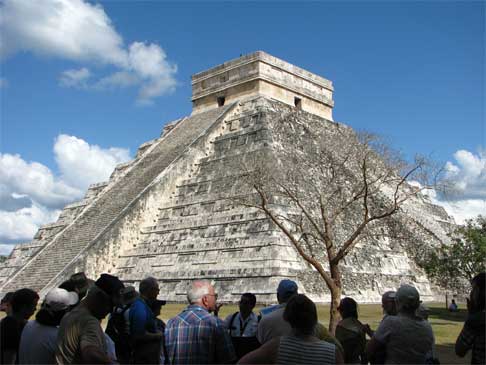
The pyramid has nine terraces symbolizing the planes of the underworld. Up until two years ago you could still climb the stairs and reach the temple at the top, but no more. Maybe it was a good thing since there are 91 steps on each of the four staircases. A significant number since 91 steps x four staircases + the temple on top = 365 for the number of days in a year.
Only two of the staircases have been restored; the other two lie in disrepair. This is partly due to the fact that many of its stones were removed in the early 1920s to build the house of an American, Edward H. Thompson (an anthropologist and a diplomat) who bought the land where Chichen Itza stands. Can you imagine? His house is now a hotel close to the site. Here you can see one of the unrestored staircases on the south side.
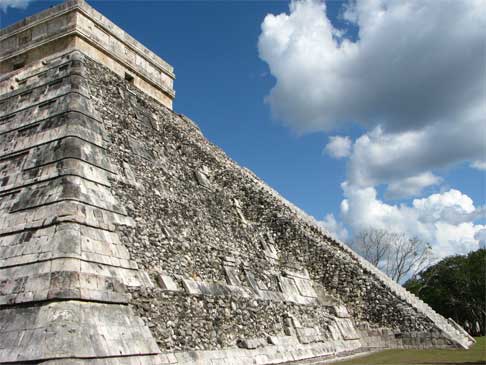
The east staircase with its numbered steps.
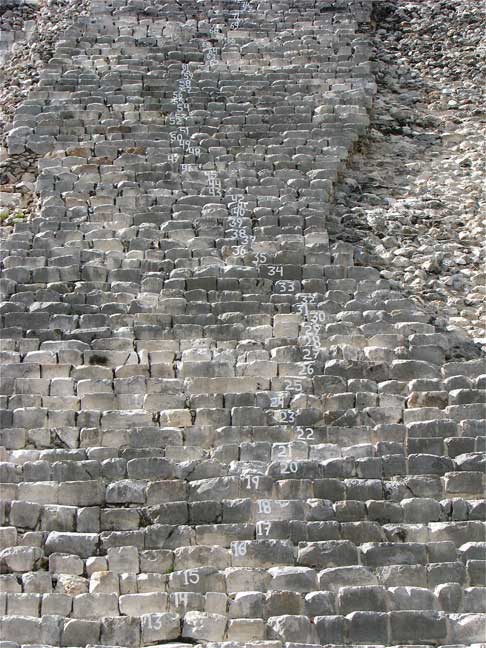
The north staircase is the most impressive and the most important. This staircase ends dramatically, flanked by two colossal heads of feathered serpents, their jaws agape.
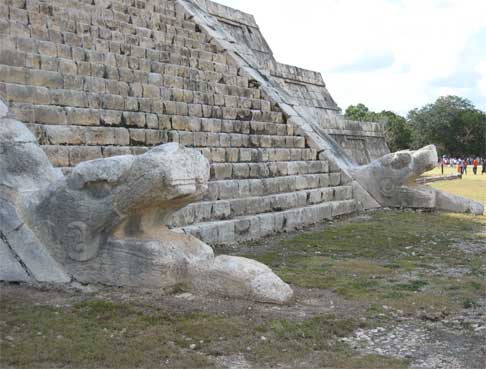
It is also a feat of astronomical genius. At 3:00 p.m. on the spring and fall equinoxes (March 20 and September 21) the sun forms a series of seven isosceles triangles of light and shade on the terraces adjacent to the staircase, giving the impression of an undulating serpent, culminating when it reaches the serpent head at the bottom. It is thought to be symbolic of the return of the god Kukulcan to Earth as the rebirth of the agricultural season.
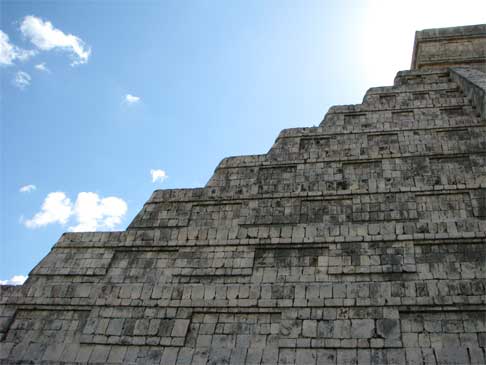
It all makes one feel tiny and insignificant.
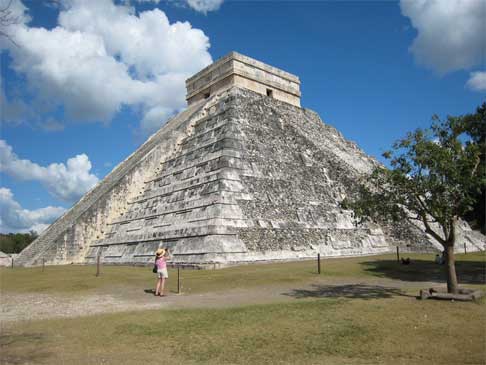
Page 152 of 230 pages
‹ First < 150 151 152 153 154 > Last ›















































